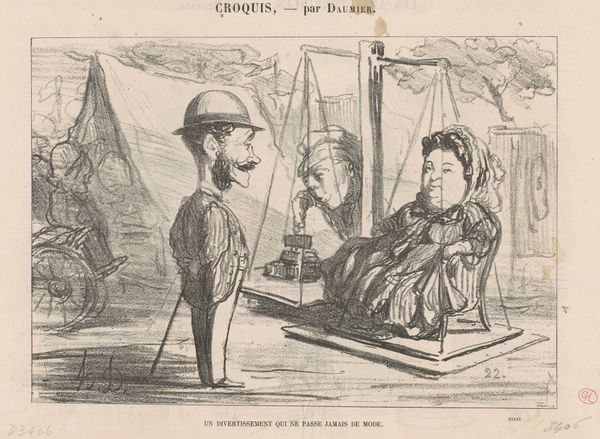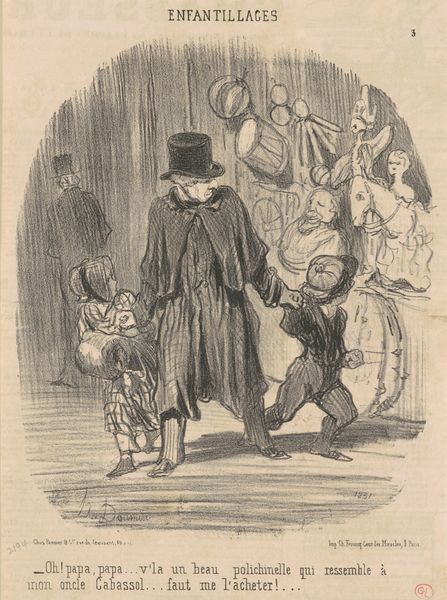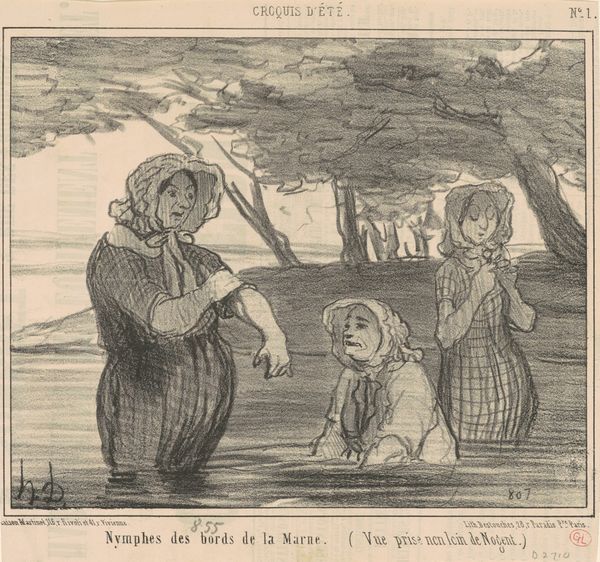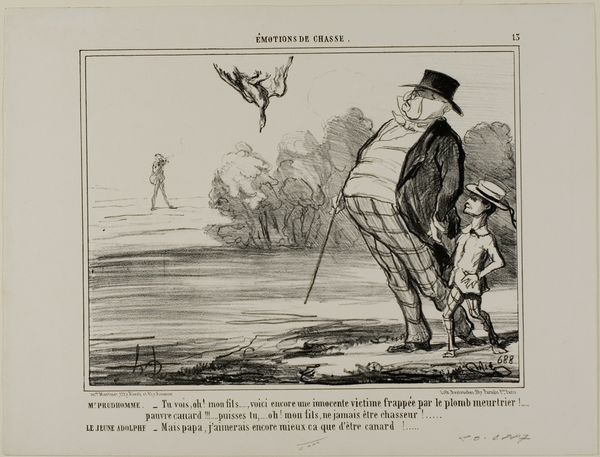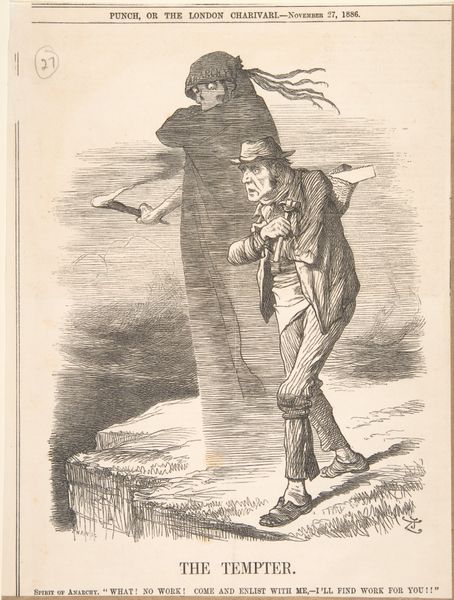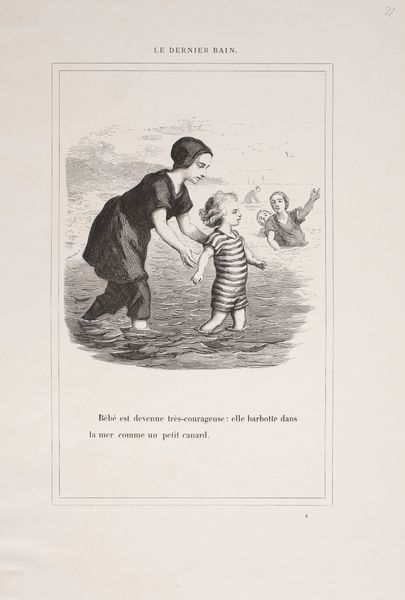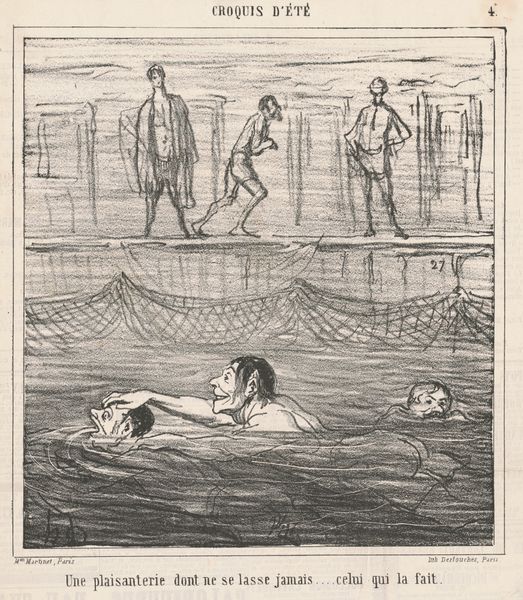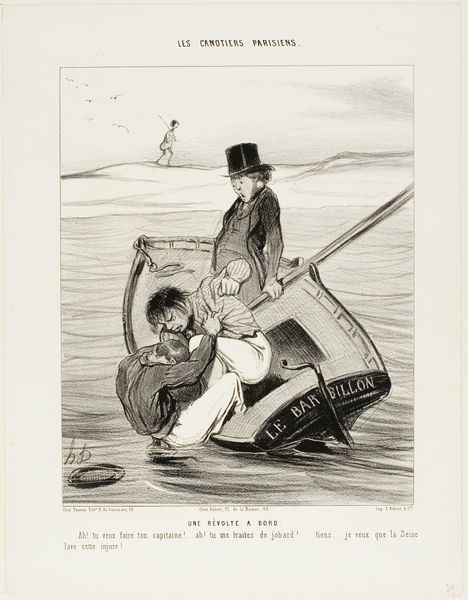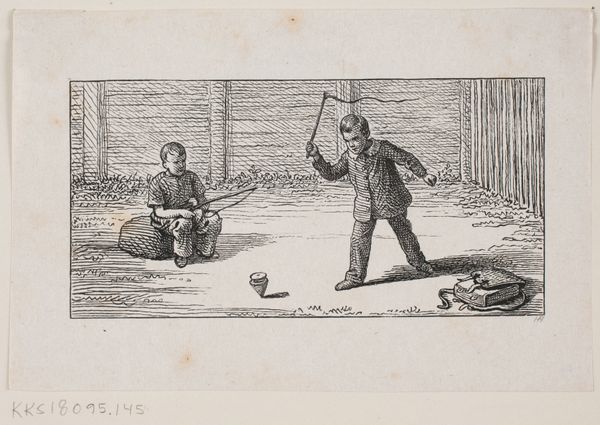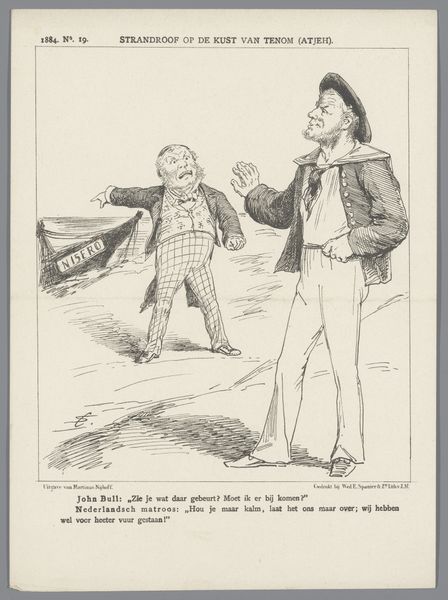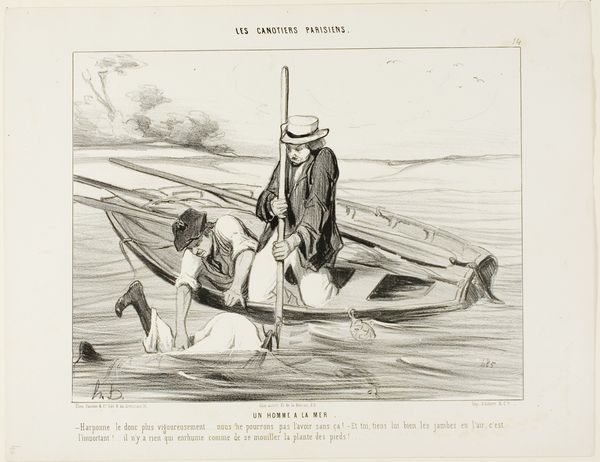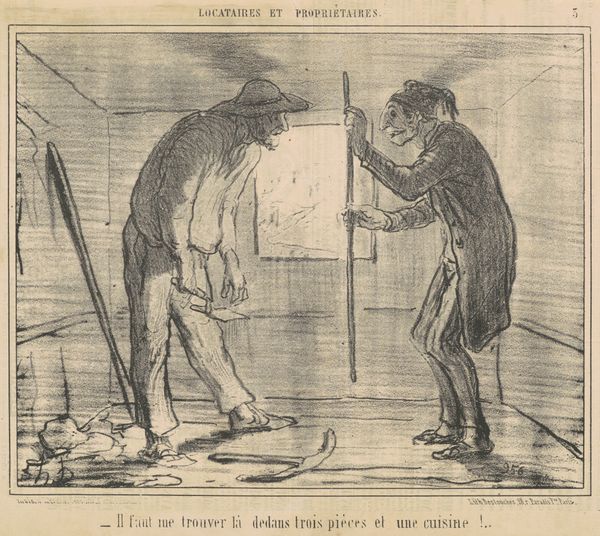
drawing, lithograph, print
#
drawing
#
lithograph
# print
#
caricature
#
figuration
#
line
#
genre-painting
#
realism
Copyright: National Gallery of Art: CC0 1.0
Curator: Allow me to introduce Honoré Daumier's lithograph from the 19th century, "Tiens papa!... un singe!...". Editor: What a biting image! The composition itself, the juxtaposition of the overdressed bourgeois man and the figure in the water—there’s an immediate sense of class critique at play. Curator: Absolutely. Daumier, a master of social commentary, crafted this image using lithography, a printing technique allowing for the distribution of his commentary to a broad audience. The medium itself democratized his artistic voice. Note how the quick, sketch-like line work lends immediacy, almost like reportage. Editor: I agree; there's a sense of journalistic urgency in capturing the moment. It’s hard not to interpret the figures swimming as racialized caricatures. Their depiction next to the bourgeois father and son undeniably speaks to prevailing attitudes about race, labor, and social hierarchy of the time. That little boy's excited, yet innocent expression as he points, encapsulates the inherited prejudices of the era. Curator: Indeed. The labor of producing prints—the grinding of stones, mixing of inks, the repetitive action—these processes connect to the lives of working people so often satirized or overlooked in fine art of this period. Daumier collapses those boundaries, forcing us to consider not just what we see, but how and for whom it was made. The print medium also encouraged distribution of such ideas. Editor: Consider too the title: "Look, Papa! A Monkey!" That phrase drips with dehumanization. It frames the act of looking, forcing the viewer to confront their own complicity in these acts of categorization and othering. The 'monkey' in the water is seen, yet not recognized as fully human. The gaze reinforces social power structures, the water becomes almost a barrier signifying a separate lower caste of people. Curator: Lithography allows for nuanced shading that enhances the grotesque elements in his caricatures. Look at the rendering of the father, his pompous stance conveyed through clever deployment of hatching, a simple technique used here for maximum satiric effect. He’s both powerful and ridiculous. The final print, sold cheaply, became a tool itself. Editor: It truly forces us to confront the legacy of such views and understand how visual representation contributed, and continues to contribute, to harmful stereotypes. The genius here is not just in his craft but in the image’s capacity to disturb and provoke critical thought even today. Curator: Well said. Ultimately, Daumier uses the humble lithograph as a weapon, skewering the pretensions of the bourgeoisie and raising uncomfortable questions about social justice that remain profoundly relevant. Editor: This artwork really reveals how a single image, distributed widely through the print medium, can embody deeply entrenched societal inequalities while also serving as a call to dismantle them.
Comments
No comments
Be the first to comment and join the conversation on the ultimate creative platform.
